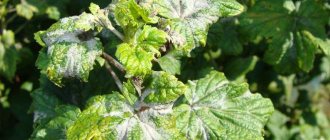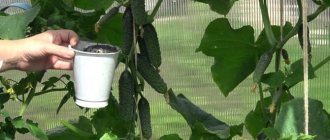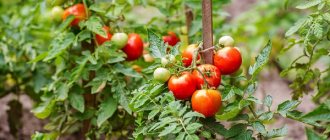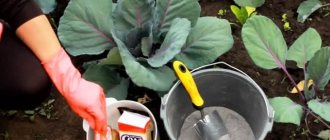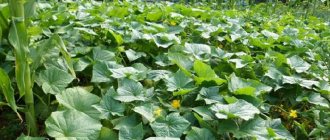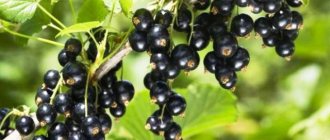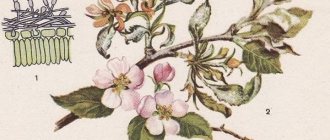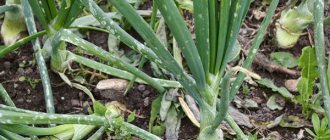Powdery mildew microbes are a large class of parasitic fungi. These include a special type of pathogen that attacks gooseberries and currants (black, red, white) - spheroteca. This specific infection is also called American powdery mildew. The disease was brought to Europe and Asia from the American continent. The gardener needs to know the manifestations of powdery mildew on currants and measures to combat this harmful disease.
Main signs of the disease
The main signs by which one can determine whether a bush is infected are almost identical for white and red currants. The differences are minor, but worth considering. Also, do not forget that the disease affects each variety differently, and you must respond to it accordingly.
black currant
The following signs are observed in black currants, signaling the need for treatment:
- Leaves, ovaries and shoots become covered with a white coating at an early stage.
- The next stage will be the plaque turning gray, which indicates that the disease is advanced.
- The leaves begin to die, changing color and curling.
- The coating spreads to the berries, changing color to gray-brown.
Black currants are less resistant to infection, and if the fungus is not dealt with in time, more than half of the crop will become unusable.
Red
Red varieties cope with the disease more easily; Symptoms include:
- the formation of a plaque similar to flour;
- Cloudy, whitish drops, similar to dew, accumulate on the surface of the leaves.
It is because of these symptoms that the disease got its name.
Causes of white plaque
Some gardeners often do not understand why mold appears on currants; they do not know that it is very dangerous due to the loss of berries. The development of powdery mildew is promoted by:
- A combination of high humidity and high temperatures.
- Thickened plantings of bushes.
- Lack of light for currants.
- Application of large amounts of nitrogen fertilizers.
The disease develops when, when shortening shoots, the cuts are not processed; spores easily get into them. The plant becomes infected with powdery mildew if planted next to a diseased bush.
White bloom often occurs on black currants, which, unlike red ones, are not resistant to fungal infections. Powdery mildew spreads quickly, from the leaves to the fruits, the berries turn gray, and the coating becomes brown.
Resistant and unstable varieties
Currant varieties vary significantly in susceptibility to the disease.
Black currant varieties are very susceptible:
- Ben Lomond
- Ben Nevis
- Ceres.
Varieties less susceptible:
- Ojebin Ojebyn,
- Titania,
- Tiben Tiben,
- Tisel,
- Ben Alder Ben Alder
- Ben Hope,
- Ben Sarek Ben Sarek,
- Ben Tirran,
- Ruben.
Prevention methods
To reduce the risk of currant infection, seedlings for cultivation should be purchased from a nursery; you should choose varieties that have been recently bred, since they are highly resistant to fungal infection.
To prevent powdery mildew, you must:
- Before planting, dip young bushes in boiled water or Bordeaux mixture.
- Comply with agricultural technology requirements.
- Do not leave weeds near currants.
- Get rid of weakened shoots in a timely manner.
Branches on which plaque has formed must be cut off. You should not grow currants in the same place for more than 10 years. In spring, it is advisable to treat the bushes with a solution prepared from water and humus. Plants are sprayed with this composition when leaves and flowers appear.
Fighting powdery mildew on currants
Biological and chemical fungicides, as well as folk remedies, are used against spheroteca on currants.
Biotherapy
How to spray infected bushes? The most harmless way to combat powdery mildew on currants is to treat it with biofungicides. These products are not chemical. They contain spores of beneficial microorganisms that destroy powdery mildew spores. In the finished con they just sleep.
They wake up after preparing an aqueous solution from the preparation, which can be sprayed, but it is better to water the soil under the currant bushes. Together with moisture, spores of beneficial microorganisms are absorbed into the stems and leaves of currants, where they eat fungal pathogens.
Biological drugs can be used at any time. Unfortunately, they do not act as aggressively as chemical drugs, but in the initial stage of the disease they play their role.
Scientists have created several such drugs, the most successful against powdery mildew on currants were “Fitosporin-M” and “Trichodermin”.
Chemicals and biofungicides
Potent fungicides are diluted strictly according to the instructions. Exceeding the dosage is dangerous. When working with chemicals, use protective gloves and a mask.
In case of advanced disease, currants can be treated with the following chemicals:
- Skor is a broad-spectrum agent that allows you to destroy not only powdery mildew, but also spotting. Weather conditions do not affect the result of exposure. The activity of the drug is observed 2 hours after treatment. A solution is prepared from 2 ml of liquid and 10 liters of water. 2-3 procedures are carried out with an interval of at least 10 days.
- Previkur penetrates the foliage, accumulates in their tissues, and destroys the mycelium. The composition is prepared from 5 ml of Previcur and 1 liter of water. Spray the foliage on both sides every 10 days. Treatment is necessary until the fungus is completely destroyed.
- Raek is a systemic fungicide that begins its work 2 hours after processing the currants. Containers from 2 ml to 1 liter are available for sale. The mixture is prepared at the rate of 2 ml per 10 liters of water. On average, an adult bush requires 3 liters.
- Topaz is a fungicidal drug that stops the proliferation of fungi and the germination of spores. For processing, dissolve 2 ml of emulsion in 10 liters of water.
- Fundazol prevents the development of spores and prevents the spread of the disease. Spraying is recommended before the inflorescences bloom and after picking the berries. To prepare a solution for 10 g of product, take 10 liters of water.
- Cuproscat is a powerful drug belonging to the chemical class of inorganic substances. Today it is recognized as one of the effective copper-containing products that quickly rid any crop of fungus. Due to the formation of a stable film on the surface, reliable protection of the plant is ensured under any unfavorable conditions. For 1 liter of water, 6 ml of concentrate is required.
It is recommended to periodically replace the powdery mildew remedy, as fungi develop immunity to the drugs. Also, not all chemicals are compatible with each other; they should be tested for undesirable reactions (precipitation, separation, etc.).
Biofungicides are less effective, but safe for nature and humans. This treatment must be repeated every 7-20 days. The drugs are washed off by rain and do not have a long-lasting effect. Examples are Fitosporin, Gamair, Planriz, Baktofit.
Treatment with folk remedies
If traditional methods are closer to you, and you are trying to get rid of the disease with them, there are a couple of recipes to combat powdery mildew, using which you can save the bush from death. Among them are:
- use of iodine;
- potassium permanganate;
- garlic-based infusion;
- use of dry mustard;
- treatment with boiling water.
Potassium permangantsovka
Helps cope with illness. To do this you need:
- 2.5 grams of potassium permanganate;
- 10 liters of water.
We mix and process the bushes several times, after which we take a break for a week.
Iodine
To create a solution you need:
- water – 9 liters;
- iodine – 1 milliliter;
- skim milk – 1 liter.
Mix and treat the bushes once every two weeks until the symptoms of the disease disappear.
Soda
Ingredients for the solution:
- baking soda – 2 tablespoons;
- water – 2 liters;
- vegetable oil or laundry soap - 1 spoon.
We treat the fungus in the morning or evening, with an interval of five days.
Dry mustard
We take:
- 2 tablespoons dry mustard;
- 1 bucket of warm water.
We dilute and let the solution cool, after which we treat the bushes.
Garlic infusion
Infuse half a bucket of garlic arrows in 10 liters of boiled water. We give the solution a day, after which we filter the liquid and treat the bushes with it. Try to treat both sides of the bush.
Mullein infusion
Fill a third of the bucket with cow dung and add water. Let the liquid brew for 4 days, after which we dilute it with water in proportions of 1 to 10 and treat the contaminated surfaces.
Carry out the treatment in the evening so as not to burn the currant leaves.
Boiling water treatment
The easiest and safest way. To implement it, you just need to boil the required volume of water and treat the bush with it. Treatment is carried out in the spring, before the flowering period.
Symptoms of the lesion
The first sign indicating that the currants are infected with a fungal infection is that a whitish coating appears on the bushes. As powdery mildew spreads, the leaves curl and wilt. Due to impaired photosynthesis, they lose their green color and then fall off, the ovary crumbling. If the disease affects ripening berries, a brown coating forms on the fruit.
What danger does it pose to a currant garden?
Fungal spores do not die even in severe frost; in spring, microorganisms begin to multiply. The infection is spread from one bush to another by the wind, birds, and insects. Sick plants weaken and withstand winter very poorly. If the currants are covered with plaque, the berries disappear.
Treatment scheme
If sensitive varieties infected with powdery mildew are grown in the garden, and the disease has appeared in previous years, it is necessary to carry out a series of sprays in accordance with the plant protection program. Disease risk assessments should be based on observation of shoot tip infections in early spring.
Treatments are carried out on the following dates:
- before flowering;
- after flowering;
- after harvest.
Before flowering
Spray with Topsin or Nimrod fungicides. The drugs are used according to the instructions. Also in the spring, a month before the buds open, you can spray the bushes and the soil under them with iron sulfate (5-6%).
After flowering
Spraying should be carried out as soon as possible after flowering, using the following preparations:
- Topsin M 500 SK,
- Nimrod 250 EC,
- Score 250 EC,
- But (Zato) 50 RG.
Currently, the most effective control agent on the market, available in a version for gardeners, is Topaz (Topas 100 EC). Currently, the systemic fungicide Topaz 100 EC (containing 100 g of penconazole per liter of product, a compound from the triazole group that acts as inhibitors of ergosterol biosynthesis - IBE) can be used in home gardening.
For currants: black, red, white (against American powdery mildew) - you can use Topaz in a single dose of 5 ml per hundred square meters up to 2 times a season during the period from the beginning of inflorescence development to the end of the growing season, that is, until the phase when all the leaves have fallen . The waiting period for topaz on currants and gooseberries is 3 weeks.
Subsequent sprays (with other means) should be repeated every 7-10 days, using at least 2 products alternately.
You can also use:
- copper-soap emulsion (2.0% soap + 0.1% copper sulfate);
- soda ash (0.5%) with the addition of soap (0.4%);
- ammonium nitrate solution (0.5%).
In the early stages, the drug Fitosporin is effective, which can be sprayed on the bushes. The drug is available in the form of powder, paste, suspension.
Attention! When choosing a product for spraying during the post-flowering period, you should be aware of the waiting period (the period that must pass from spraying to the date of harvest when it is safe to eat).
Waiting times for individual medications
| Drug name | Waiting period, days |
| Topsin | 14 |
| But | 14 |
| Nimrod | 21 |
| Score | 21 |
The waiting period before harvest must be strictly observed! Typically, spraying is completed 3 weeks before picking the berries.
After harvest
Spraying begins immediately after currant harvest and is repeated every 10-14 days. The above drugs can be used.
Attention! The drugs Nimrod, Skor, But can be used no more than 2 times per season.
The number of sprays against currant powdery mildew is very high and this is certainly not conducive to our health or environmental protection. If currant bushes are constantly sick, it is better to remove them and plant a resistant variety or refuse to grow this bush.
Who is the causative agent
The spheroteca fungus, which survives the cold period of the year on the stems and in the apical buds of fruit bushes, under favorable conditions begins to multiply, the spores are transferred by insects and the wind to the leaves and ovaries of pumpkin crops, grapes, and gooseberries.
The pathogen reproduces with the help of conidia that fall on other shrubs, and sexually, when the spores of the parasite are released from its body in the spring.
In what cases to use drugs
Chemical preparations are used in the advanced stage of powdery mildew, when gentle remedies no longer help.
If the disease has spread throughout all the bushes or folk remedies help little, it is better to use store-bought fungicides - preparations for killing fungi:
- Bordeaux mixture;
- "Pure Flower";
- "Topaz";
- "Forecast";
- "Skor";
- "Propi Plus";
- "Mancozeb";
- "Strobe."
The drugs are used according to the instructions. You should wear goggles and gloves during handling . Often the same fungicides are used for prevention - usually the treatment is carried out at the beginning of the season.

